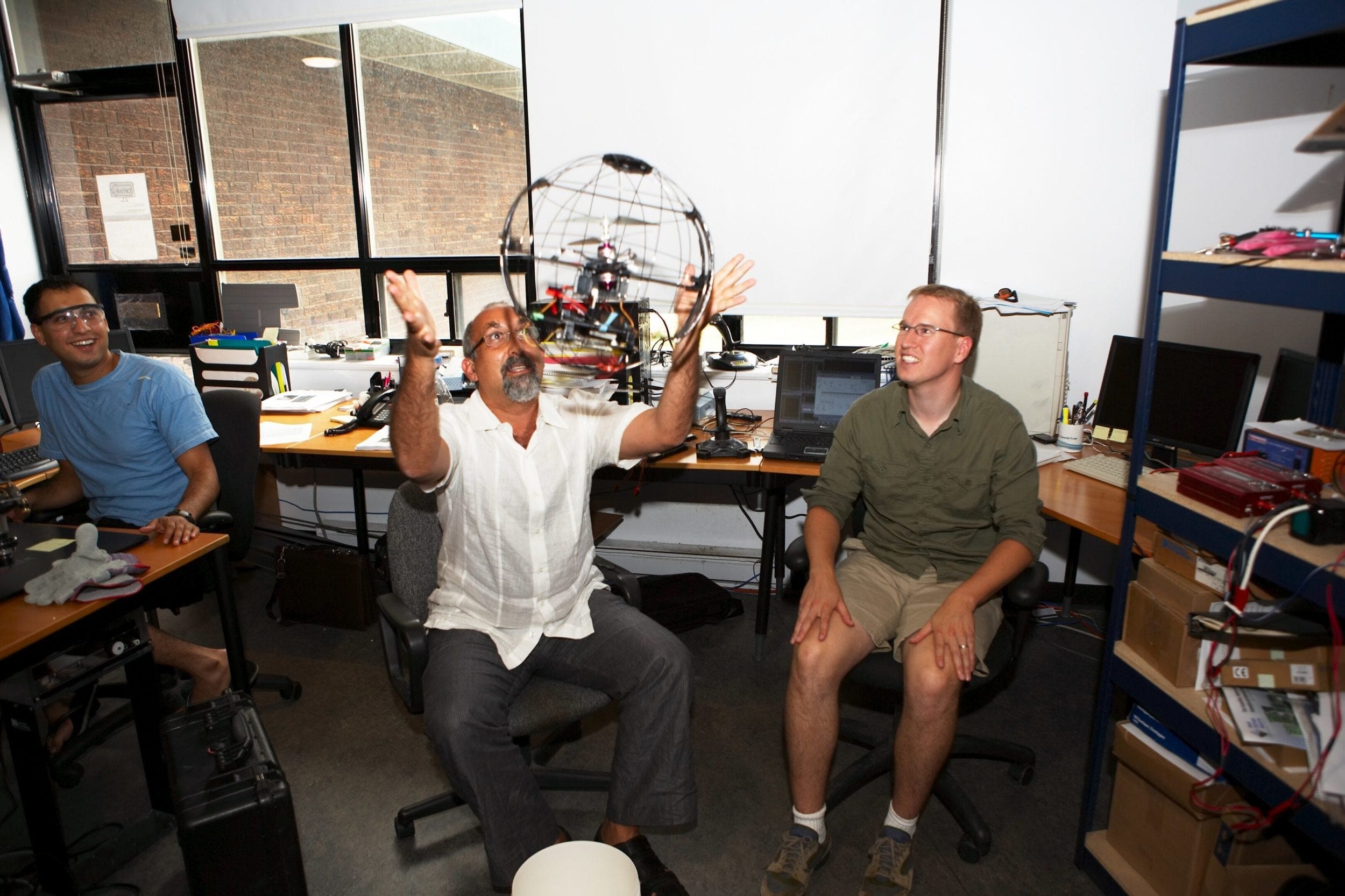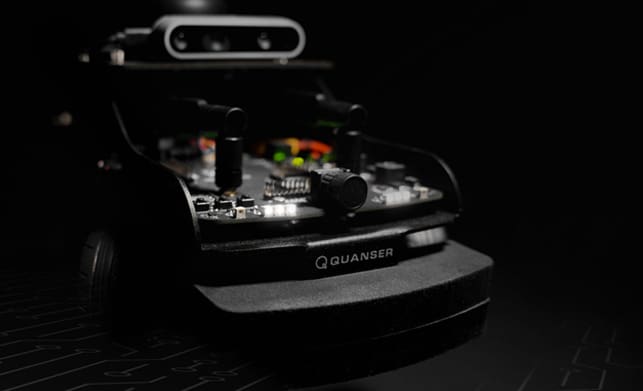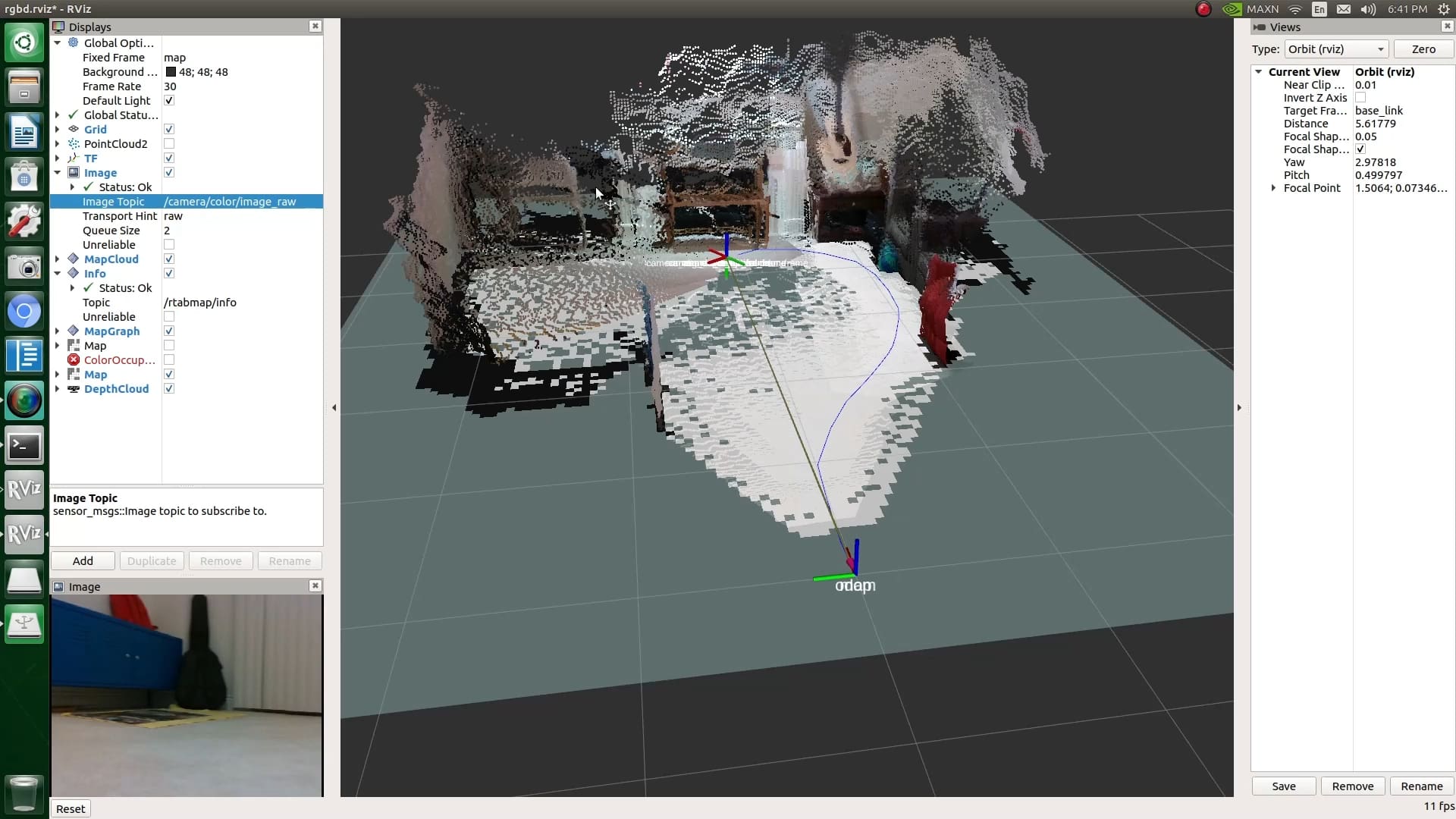
At ACC 2024, I attended workshops on promoting Justice, Diversity, Equity, and Inclusion (JEDI) in the controls community. Shockingly, women represent less than 10% of professionals in this field. Workforce data shows this issue is not only related to the education landscape. Hispanic workers make up only 8% of the STEM workforce, though they are 17% of U.S. working adults (See reference here).
Many promising ideas were discussed, but one concern stood out, the sustainability of outreach programs. While passionate individuals are actively involved, these initiatives often lack long-term support from sponsors. Activities like monthly community lunches or special grants are helpful but don’t ensure lasting impact.
The main issue is that outreach isn’t typically seen as outcome-based, and even when it is, results can take years to materialize. This delay makes it tough to showcase value to supporters. However, at Quanser, we’ve observed that effective outreach can be an integral part of universities—not just a voluntary add-on. These programs help recruit students, enhance the university’s brand, and advance its mission. By integrating results-oriented outreach into the university’s value chain, we can guarantee their sustainability.
Curious about how to run outcome-based, value-added outreach, I spoke with Dr. Michael Frye at the ACC self-driving car competition. He’s a Professor of Engineering and Director of the Autonomous Vehicle Systems Research Labs at the University of the Incarnate Word, a small private University in San Antonio, Texas (USA). Dr. Frye is also the founder of the GEMS Program (Girls in Engineering, Math, and Science). Initiated in 2015, the GEMS Program engages female high school and undergraduate students in STEM research using advanced technological platforms. As a leader in outreach initiatives, Dr. Frye shared an invaluable framework for building and running effective programs, which I’ll share with you in the next few paragraphs.
GEMS Program

Dr. Frye’s GEMS Program elevates outreach by immersing students in real-world STEM research at the University of the Incarnate Word’s Autonomous Vehicle Systems Research Labs. Participants gain hands-on experience in programming, robotics, and applied AI, developing projects and presenting their work to prepare for future careers. About 40 students joined miniGEMS, engaging in programs like the FIRST LEGO League, while around 18 participated in megaGEMS, working on capstone projects and as research lab employees.
Supported by the Army Education Outreach Program (AEOP), GEMS also offers research apprenticeships and intensive STEM programs for high school students. Initially focused on Hispanic females, the program aims to expand to more underrepresented groups.
Strategic Elements for Outreach Program Success
“Successful outreach requires ongoing support and engagement, not just one-off events,” says Dr. Frye. The program continues during the fall with classes. “For some sincere students, they are working with us, and even we both pay the students and teach them,” Dr. Frye adds. Twin sisters, Brenda and Eileen, who have worked with us for seven years, are now in college. Additionally, we work with Hispanic groups, recognizing the importance of family, so we have specific meetings and gatherings for families as well.
Teaching complex subjects like Deep Learning and Reinforcement Learning to high school students shows they thrive with easy-to-use, interactive, intuitive, and engaging platforms. Quanser products, such as the QDrone, QCar, QBot, and Qube, are invaluable, providing an accessible yet challenging environment. High school projects use the QCar to introduce autonomous systems, while undergraduates use the QBot and QDrone for advanced AI projects. “Our students’ ability to transition from no prior knowledge to executing complex projects like SLAM in a short time demonstrates the effectiveness of Quanser products.”
Dr. Frye believes the program should build students’ confidence in handling complex tasks. Also, he added “Monitoring results to achieve this goal is essential.”

Key Elements for a Successful Outreach Program
Projects Examples:
One of the biggest challenges in outreach, as I learned from Dr. Frye, is creating engaging projects that match students’ knowledge levels. At Quanser, we offer outreach-ready solutions featuring examples and projects in Python and Simulink. Our multi-level user interfaces accommodate various requirements and complexities. With our open-architecture ecosystem, users can access our software and hardware from low-level programming up to high-level platforms like the Quanser STEM experience, where students use interactive tablet-based interfaces. This makes our tools accessible to users with different levels of expertise.
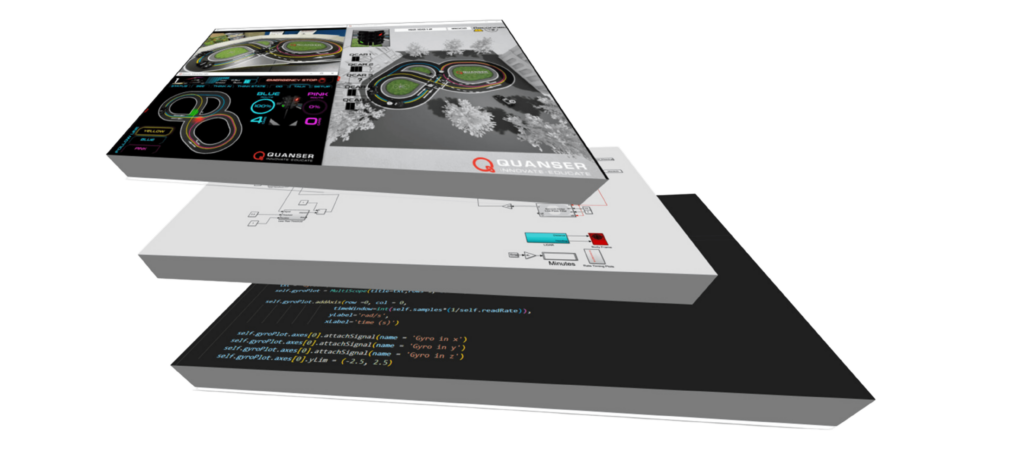
Quanser Interfaces
Below are some projects completed with Quanser products in GEMS programs to inspire new ideas.
1. QCar Line Following – High School and Middle School Project
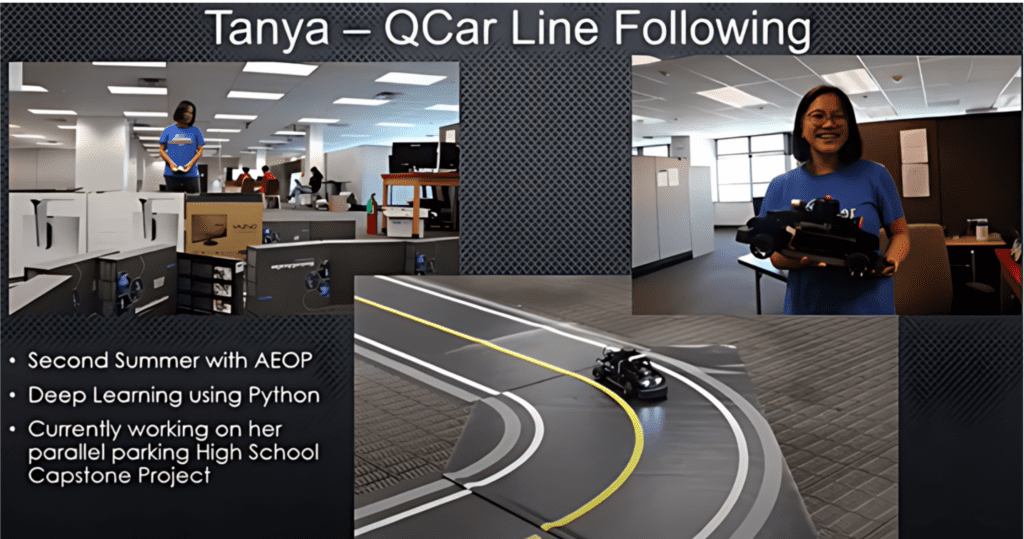
Tanya, a high school student now at Purdue University, developed a line-following system using deep learning on the QCar platform. She manually drove the QCar to record data, created a manual controller for data collection, and developed a line-following model in Python using TensorFlow. For her capstone project, she combined PID control and deep learning to autonomously parallel park the QCar. The QCar platform enabled Tanya to undertake advanced AI projects without technical complexities, fostering her success and inspiring the inclusion of more advanced AI topics in future summer programs.
2.SLAM with QCar – High School and Middle School Project
 Toni, a sophomore, and Brenda and Eileen, juniors, embarked on a SLAM project with the Quanser QCar. Despite initial unfamiliarity with MATLAB/Simulink, they quickly adapted. They learned QCar hardware, mastered the software, and successfully mapped their labs, gaining deep insights into SLAM concepts.
Toni, a sophomore, and Brenda and Eileen, juniors, embarked on a SLAM project with the Quanser QCar. Despite initial unfamiliarity with MATLAB/Simulink, they quickly adapted. They learned QCar hardware, mastered the software, and successfully mapped their labs, gaining deep insights into SLAM concepts.
The QCar’s ease of use allowed them to focus on conceptual understanding and practical application, rather than getting bogged down by hardware complexities.
3. IEEE Drone Competition – FIRST Place at St. Mary’s University on Oct 29, 2022!
In October, the GEMS high school drone team secured first place at the collegiate level against St. Mary’s and UTSA by utilizing QDrone and Tello drones, porting algorithms using Python, and excelling in obstacle courses and balloon-popping tasks. Competed against St. Mary’s and UTSA at the collegiate level.
4. Color Detection in the QArm- undergraduate Project
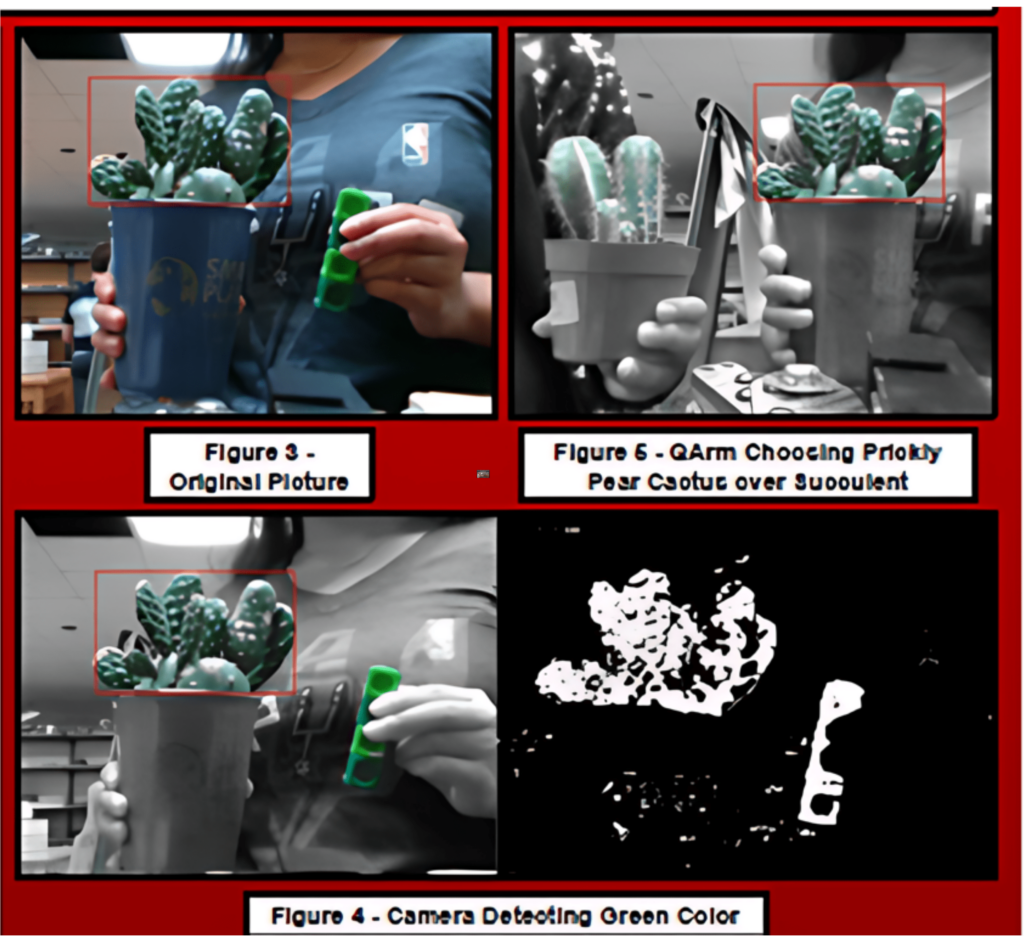
This project involves using the QArm to explore color detection, aiming to enable the QArm to identify specific colors, like the green of the Prickly Pear Cactus, using Simulink software. This technology has potential applications in various fields, such as medicine and manufacturing.
Programmed the QArm with Simulink to detect colors by processing pixel intensities and differentiating shades of green, and configured it to accurately identify the green of the Prickly Pear Cactus by adjusting hue, saturation, and value parameters.
The QArm offers a versatile, programmable robotic platform with an RGBD camera, providing a safe, student-friendly, and interactive experience. Future work includes implementing object detection, combining color and object detection to gather fruits from the Prickly Pear Cactus, and advancing manufacturing, medicine, and agriculture by integrating AI and machine learning with these capabilities.
For more examples, I suggest checking out this amazing webinar by Dr. Frye.
Program Performance Monitoring and Key Metrics
Measuring the outcomes of programs like GEMS and miniGEMS is challenging but essential. Dr. Frye emphasized, “We’ve noticed that students involved in our programs tend to have higher attendance and are more likely to graduate, with 97% continuing their education—exceeding the regional goal of 90% attendance and an average of 82%.”
Tracking academic and career performance is difficult, but we maintain close relationships with students. Dr. Frye noted, “Most participants stay in touch with us; we want them to stay in school and not drop out, and we want to see them in skill-based jobs, not necessarily colleges.”
Having champions and role models is another KPI. Dr. Frye shares a proud anecdote: “One of our first students from the 2015 class, who worked on Quanser projects, went on to attend MIT. Initially, I thought it would take 15-20 years to have a student go to MIT, but within five years, we had our first MIT student, and we’ve now had two.”
Additionally, the number of graduate students grew by 300%, which is a strong indicator of the value added through our outreach efforts.
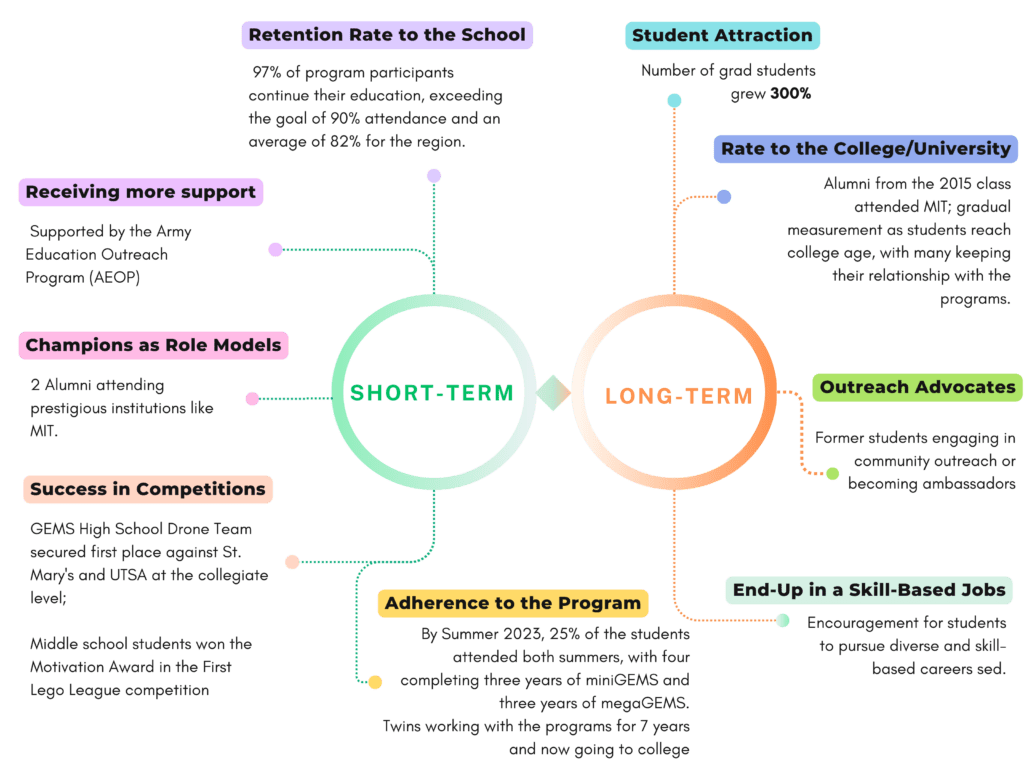
KPIs for Monitoring Short and Long-Term Program Performance
Critical Factors in Program Operations
Running the outreach program is challenging and requires innovation and creativity to benefit all stakeholders. Dr. Frye’s team has enhanced outcomes for participants and undergraduate mentors. A balance of theory and hands-on hardware work is essential to keep students engaged. Highlights of Dr. Frye’s approach include:
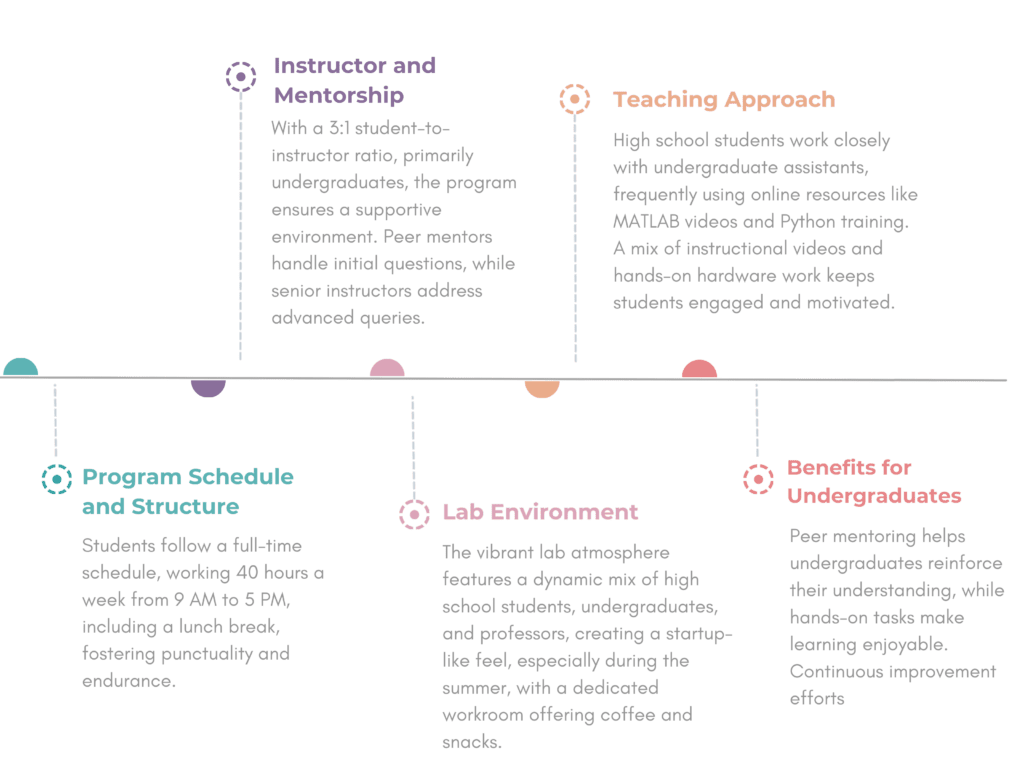
Key Points for Effective Program Implementation
Conclusion
With the right strategies, resources, and tactics, universities can turn their outreach programs into valuable and sustainable parts of their mission. This not only ensures lasting impact but also helps build a vibrant academic community.
We invite you to share your outreach experiences with me, Morteza Mohammadi, at Morteza.Mohammadi@Quanser.com. If you’re interested in learning more about the Quanser STEM experience, please reach out for additional information. Your insights and collaboration can help advance STEM education and make a meaningful difference in our communities.
————————————————————————————————————————————————————————————————-
You can find more information about the GEMS programs and their achievements in the following resources:
- S. Weiss-Lopez, M. Frye, and O. Jones, “Overview of the megaGEMS AEOP Summer 2021 Research Apprenticeship Camp,” Proceedings of the 129th American Society for Engineering Education (ASEE) Annual Conference and Exposition, Minneapolis, Minnesota, June 26–29, 2022. [Link to the paper]
- “How to Develop a Culture of Coding for the Future: A Case Study of the megaGEMS Coding Academy,” Proceedings of the 2024 ASEE Annual Conference & Exposition, The Future of Engineering Education, Oregon Convention Center, June 23–26, 2024.
- GEMS Program Website: [miniGEMS]
- Dr. Frye’s Webinar: “YOUser Webinar | Using Quanser Autonomous Vehicles for High School Outreach Programs.” Watch on YouTube
ABOUT THE AUTHOR
Morteza is a Product Marketing Engineer at Quanser with a Master’s in Aerospace Engineering and a second Master’s in Engineering Innovation and Entrepreneurship. He enjoys engaging with Quanser’s customers to learn about their experiences with our lab solutions and sharing their inspiring stories.


